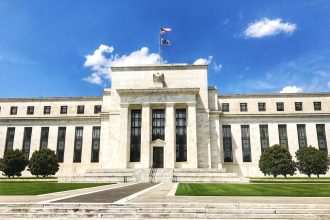Key takeaways
- Someone can use your personal information to open a bank account and bounce checks, overdraw the account or store illicitly obtained funds.
- You can avoid being a victim of this type of identity theft by monitoring your credit report, checking your bank account regularly and avoiding phishing scams where you give out your personal information.
Plenty of Americans know the sinking feeling of finding unfamiliar information on their credit report or receiving an unexpected debit card in the mail. In fact, banking fraud incidents increased by a whopping 41 percent between 2021 and 2022, according to PYMNTS.
Whether someone has fraudulently opened a bank account on your behalf or you simply want to help ensure it doesn’t happen to you, there are several precautions you can take.
Why accounts are opened in other people’s names
Scammers may open a bank account fraudulently in someone else’s name to bounce checks or overdraw the account. Others may intend to use the account for storing illicitly obtained funds.
This is identity theft, and it can negatively impact your finances, including your ability to open future bank accounts or obtain credit.
How to find out if bank accounts are fraudulently opened in your name
If scammers open bank accounts in your name, you may be able to find out about it by taking a look at your checking account reports. These consumer reports include information about people’s banking and check-writing history.
Banks use checking account reports when deciding whether to offer checking accounts to applicants. In some cases, consumers can request free copies of these reports.
Checking account reporting companies include ChexSystems, Telecheck, Early Warning Systems and Certegy, according to the Consumer Financial Protection Bureau (CFPB). The agency provides a list of contact information for these companies.
How fraudsters may open an account in your name
Scammers are able to obtain consumers’ personal data on the black market or through data breaches. Such data may include names and addresses, Social Security numbers, existing credit cards or bank account numbers or medical insurance card ID numbers.
Information such as your name, address and Social Security number can then be used to open a bank account fraudulently.
In addition to opening bank accounts, other things fraudsters may do with your personal information include obtaining new credit cards, stealing your tax refund, obtaining medical care and opening new credit cards, according to the Federal Trade Commission (FTC).
What to do if you’re a victim of bank fraud
Whether someone has fraudulently opened a bank account in your name or they’ve accessed your existing account, you have recourse when it comes to minimizing the damage — especially if you act fast.
- Notify the bank. They’ll explain the next steps, whether they involve closing the bank account, issuing you a new debit card or restoring funds that have been lost.
- Secure your online accounts. Change the passwords for all your bank and credit card accounts. Using a unique password for each account helps prevent scammers from accessing all of your accounts if they’re able to get into one.
- Gather documentation of the fraud. This includes any bank statements, a total of the amount of money you’ve lost and copies of any related phishing emails.
- File an FTC report.Report identity theft to the FTC, and its website will generate a personal recovery plan, including pre-filled forms and letters you can use.
- File a police report. This is especially useful if you know the person responsible for the bank fraud and have information that could ultimately help convict the scammer.
- Dispute fraudulent transactions. Reach out to checking account reporting companies to dispute fraudulent transactions.
Banks accused of opening fraudulent accounts
Wells Fargo
Another culprit behind such fraudulent account opening has actually been banks themselves. This was brought into the public spotlight in 2016, when Wells Fargo was fined by federal regulators for creating accounts for some clients without their knowledge over the previous 14 years.
According to the U.S. Department of Justice, these accounts were opened due to Wells Fargo “pressuring employees to meet unrealistic sales goals” as they sold additional financial products to their existing customers.
Millions of fraudulent customer accounts were created in total, the Department of Justice reported. Wells Fargo ultimately agreed in 2020 to pay $3 billion to federal regulatory agencies to settle long-running criminal and civil probes into the fraudulent practices.
Customers harmed by the fraudulent sales practices would receive a total of $142 million in compensation under a class-action settlement, according to a 2017 statement from Wells Fargo.
U.S. Bank
Wells Fargo customers aren’t the only ones whose bank may have fraudulently opened accounts on their behalf. In July 2022, the CFPB fined U.S. Bank $37.5 million for illegally accessing its customers’ credit reports to open savings accounts, credit cards and lines of credit without customers’ consent.
Like at Wells Fargo, U.S. Bank employees allegedly created the fictitious accounts in response to sales pressure. The bank was aware of the illegal practice for more than 10 years, according to the CFPB.
One of the enforcement actions required of U.S. Bank by the CFPB was to return all illegally charged fees to affected customers, plus interest.
In agreeing to the settlement, U.S. Bank did not admit or deny any wrongdoing, according to the consent order.
How to avoid becoming a bank fraud victim
- Regularly check your bank account activity. Log onto your accounts and make sure all transactions look familiar. Immediately report any suspicious-looking activity to the bank.
- Monitor your credit report. Create accounts with the big credit bureaus — Experian, Equifax and TransUnion — to keep an eye out for new accounts that weren’t opened by you.
- Don’t give out personal information to strangers. This includes your name, address, bank account numbers and Social Security number.
- Be wary of attachments in emails. These could come from scammers and be a means of accessing information on your computer.
- Beware of emails asking to verify your bank account information. This may be a phishing scam. A bank or credit union won’t ask for your information over email, according to the CFPB. If you have questions regarding an email supposedly sent from your bank, contact the bank directly by calling its customer service number.
Bottom line
If you find out that a bank account has been opened fraudulently in your name, the sooner you act, the better. Once you’ve gathered relevant documentation and communicated with parties including the bank, law enforcement and the FTC, steps can be taken to try and recover any lost money and apprehend the responsible party.
Helping ensure bank account fraud doesn’t happen to you starts with monitoring your accounts and credit reports regularly, practicing smart password management and never giving your information to anyone you don’t know and trust.
Following these basic rules of thumb can go a long way in keeping both your identity and your money safe and sound.
— Bankrate editor Kristen Kuchar updated this article.
Read the full article here
















